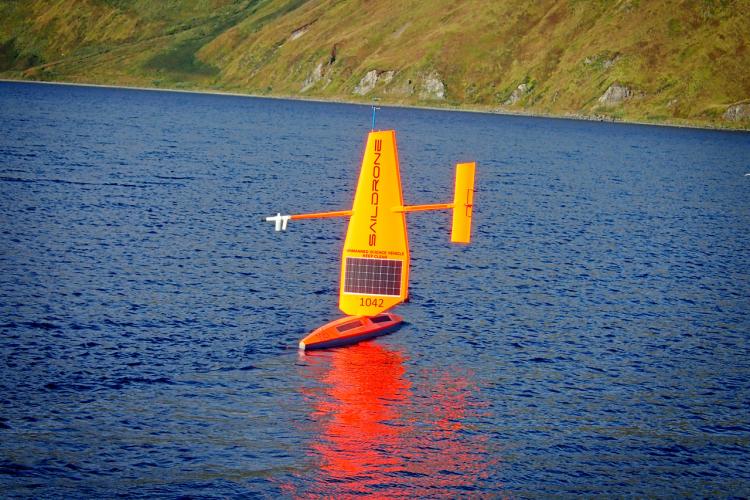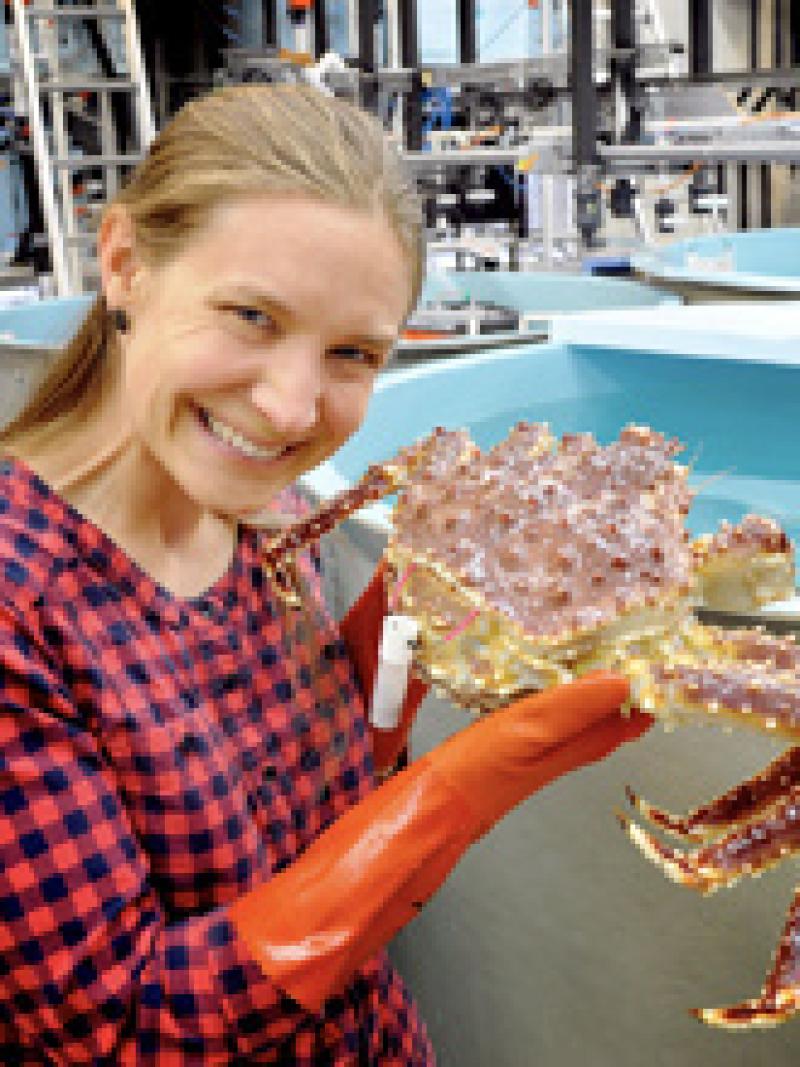
Tagged red kings crabs just before they were released in June 2019
The red king crabs we tagged back in June have now had three and half months to run free. So, it’s time to find out where they walked! Were they lazy crab sitting around with all six feet up or did they put on their hiking boots and go on an expedition?
I was just out in Dutch Harbor to see the launch of two Saildrones. These shockingly bright orange sailboat drones will perform a search pattern across Bristol Bay, listening for the signals the crab tags send out.

The Saildrones sure were impressive to see! On the dock they towered above me, looking like a kayak with a giant sail. We were happy to have so many people, including Mayor Frank Kelty of Unalaska, stop by as the drones were assembled and then lowered into the water. Besides having an acoustic receiver that will pick up the “pings” sent out by the crab tags, the drones are packed full of other scientific equipment, to measure just about everything! – wave height, currents, depth, chlorophyll, temperature, salinity, wind speed, etc. The receiver sits right at the bottom of the keel, pointing downward to listen for the crab tags. We wanted to make sure everything was functioning properly before sending the drones out on their own, so we did some tests in the bay. A couple test tags were lowered down in the water to make sure the drones could detect them. It all worked beautifully and the drones were released to sail off to Bristol Bay. Luckily they got off to a good start with favorable winds propelling them quickly away. After a day they’d already made it 45 miles out, past Akutan and Akun Islands! If you are out on the water and happen to see one of these drones please try to steer clear of it! They won’t be going very fast compared with a boat (2-3 knots on average). I’ll update you soon- keep your fingers crossed that we’ll re-find our crab!





